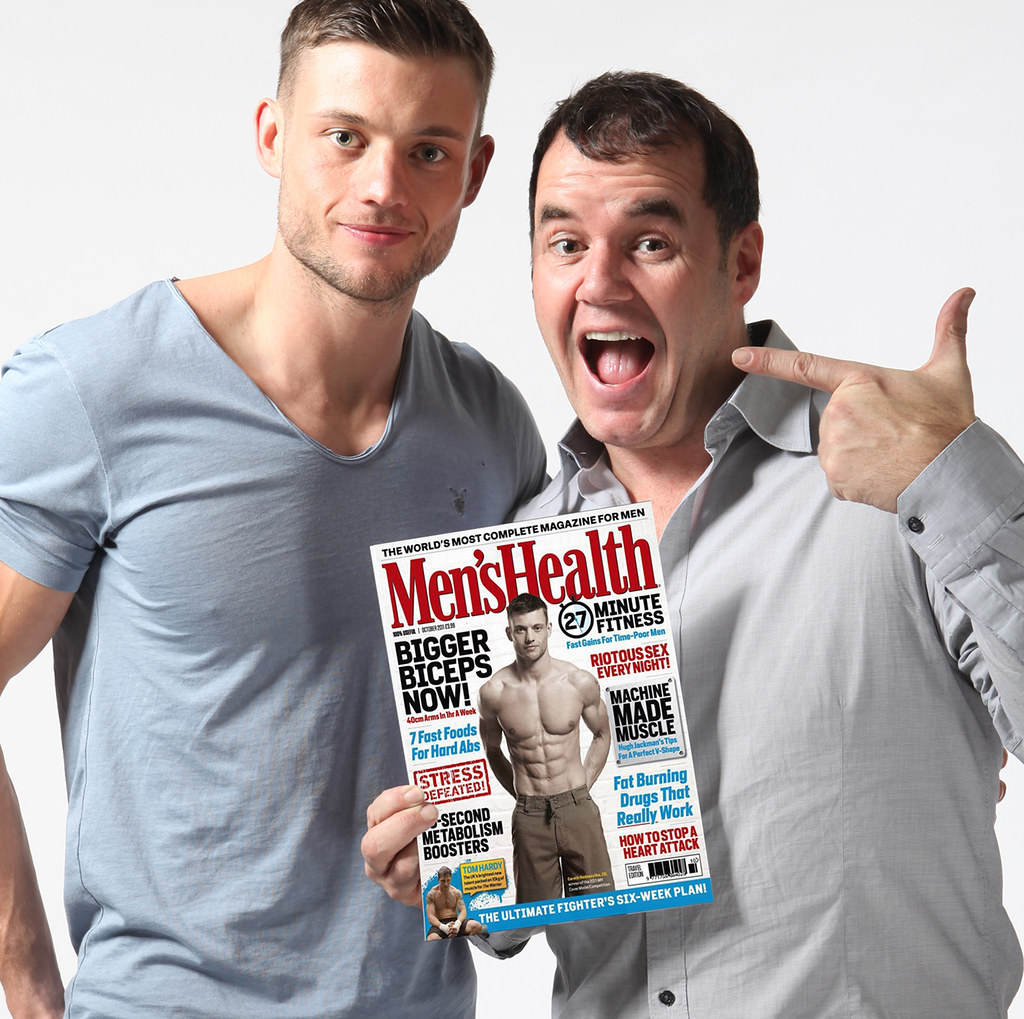Are you tired of feeling sluggish and out of shape? Do you find yourself avoiding physical activity because it feels too daunting? You're not alone. Many people struggle with finding the best ways to get fit and lead a healthy lifestyle. Luckily, there are a variety of approaches to achieving your fitness goals that don't involve extreme diets or grueling workout routines. In this blog post, we'll explore some of the most effective ways to get fit and improve your overall health. Get ready to take your first steps towards a more active, healthy lifestyle!
The Benefits of Getting Fit
Regular physical activity and healthy diet play a pivotal role in achieving overall well-being. Getting fit offers a host of benefits, including improved physical health, better mental health, increased energy levels, reduced stress and anxiety, and much more. It also lowers the risk of developing chronic illnesses such as diabetes, high blood pressure, heart disease and obesity.
One key to successful fitness is regular exercise that involves moderate-to-vigorous activities like running/jogging/cycling or strength training for at least 150 minutes per week. Another important aspect is consuming nutrient-dense foods while limiting processed junk food high in added sugars and saturated fats.
Adopting healthy lifestyle habits can take time but it's important to focus on achievable goals with gradual progress rather than trying to make drastic changes overnight. With consistent effort towards getting fit through physical activity and healthy eating habits one can achieve long-term results that positively impact their quality of life for years to come.

The Best Ways to Get Fit
Getting fit is important for both physical and mental health. Regular exercise is one of the best ways to achieve fitness. It can help you lose weight, build muscle, and improve your overall health. Cardiovascular exercises like running, cycling, or swimming are great for improving your heart health and burning calories. Strength training exercises like weightlifting or bodyweight exercises can help you build muscle and increase your metabolism. High-intensity interval training (HIIT) is another effective way to get fit as it combines both cardio and strength training in short bursts of intense exercise. It's important to find an exercise routine that works for you and stick to it consistently. Consistency is key when it comes to achieving fitness goals. Remember to always warm up before exercising and cool down afterwards to prevent injury.
The Different Types of Fitness
There are various types of fitness that people can engage in, depending on their preferences and goals. One popular option is cardiovascular or aerobic exercise, which involves activities such as running, cycling, and swimming. These exercises help to improve heart health by increasing the heart rate and improving blood flow throughout the body.
Strength training is another type of fitness that focuses on building muscle mass and strength through weight lifting or resistance training exercises. This form of exercise also has benefits for bone health, metabolism, and overall physical performance.
Another type of fitness gaining popularity is mind-body practices such as yoga or Pilates. These exercises combine physical movement with mental relaxation techniques to improve flexibility, balance, mindfulness and reduce stress levels.
Overall, it's important to choose a type of fitness activity that you enjoy so you'll stick with it over time. Mixing up different forms of exercise to create a balanced workout routine will help maximize the benefits for your body both physically & mentally.

The Importance of Fitness
Fitness is an essential aspect of a healthy lifestyle. It not only helps in maintaining physical health but also improves mental well-being. Regular exercise can reduce the risk of chronic diseases such as heart disease, diabetes, and obesity. It also helps in managing stress and anxiety levels.
Cardiovascular fitness is one of the most important aspects of overall fitness. It refers to the ability of the heart and lungs to supply oxygen-rich blood to the muscles during physical activity. Activities such as running, cycling, and swimming are great for improving cardiovascular fitness.
Strength training is another important aspect of fitness. It helps in building muscle mass and increasing bone density. Weightlifting, resistance band exercises, and bodyweight exercises are great for strength training.
Incorporating a variety of exercises into your fitness routine can help in achieving overall fitness goals. It is important to consult with a healthcare professional before starting any new exercise program, especially if you have any underlying health conditions.

The Benefits of Exercise
Regular exercise is essential for maintaining good health and overall well-being. Physical activity can help prevent chronic diseases such as heart disease, stroke, and diabetes by improving cardiovascular health and reducing the risk of obesity. It can also improve mental health by reducing stress levels and boosting cognitive function.
To get these benefits, you don't need to spend hours at the gym every day. Even brief bouts of moderate-intensity exercise, such as brisk walking or cycling, have been shown to be effective in promoting good health.
Incorporating strength training into your routine can also be beneficial for building muscle mass, improving bone density, and increasing metabolism. Bodyweight exercises like push-ups and squats are a great way to start if you're new to strength training.
Remember that any form of movement counts towards staying healthy - from taking the stairs instead of the elevator to going on a leisurely bike ride with friends. So find activities that you enjoy and make physical activity a regular part of your lifestyle!

The Best Ways to Exercise
Regular exercise is one of the best ways to improve your overall health and fitness. It can help you lose weight, reduce your risk of chronic diseases, and improve your mental health. When it comes to exercise, there are many different types to choose from. Cardiovascular exercises, such as running or cycling, are great for improving your heart health and burning calories. Strength training exercises, such as weightlifting or bodyweight exercises, can help you build muscle and increase your metabolism. Flexibility exercises, such as yoga or stretching, can improve your range of motion and reduce the risk of injury. It's important to find an exercise routine that works for you and fits into your lifestyle. Aim for at least 30 minutes of moderate-intensity exercise most days of the week for optimal health benefits.
The Different Types of Exercise
Strength training and cardiovascular exercise are two of the most popular types of exercise. Strength training involves using weights or resistance to build muscle and increase strength. Cardiovascular exercise, on the other hand, focuses on increasing heart rate and improving cardiovascular health. Both types of exercise have their own unique benefits.
Strength training can help increase bone density, improve posture, and boost metabolism. It can also improve overall physical performance and reduce the risk of injury. Cardiovascular exercise, on the other hand, can help reduce the risk of heart disease, stroke, and diabetes. It can also improve mood and mental health.
It's important to incorporate both types of exercise into your fitness routine for optimal results. Aim for at least 150 minutes of moderate-intensity cardiovascular exercise per week and 2-3 strength training sessions per week. Don't forget to warm up before exercising and cool down afterwards to prevent injury.

The Importance of Exercise
Regular exercise is important for maintaining good health and reducing the risk of chronic diseases such as heart disease and diabetes. The benefits of exercise extend beyond physical health; it also helps to improve mental health by reducing stress, anxiety, and depression.
There are many types of exercises that can be incorporated into a fitness routine. Cardiovascular exercises like running or cycling are great for improving cardiovascular endurance, while strength training with weights or resistance bands can help build muscle mass and increase metabolism.
It's important to find activities that you enjoy so that exercising becomes a habit rather than a chore. Some examples include hiking, swimming, dancing, or playing sports.
Regardless of what type of exercise you choose to do, consistency is key. Starting small with 30 minutes a day and gradually increasing intensity and duration can lead to long-term success in achieving your fitness goals. So let's get moving!
The Benefits of Eating Healthy
Fueling Your Fitness: The Importance of a Healthy Diet
To fuel your fitness routine and achieve maximum results, a healthy diet is crucial. Proper nutrition provides the essential nutrients needed for muscle growth, repair, and recovery. Additionally, eating a balanced diet that includes plenty of fruits and vegetables can help prevent chronic diseases like diabetes and heart disease. Without proper nutrition, exercising regularly may not yield significant improvements in overall health or weight loss efforts. It's important to focus on whole foods rather than processed options to ensure your body gets all the vital vitamins and minerals it needs without added sugars or unhealthy fats. Incorporating healthy eating habits into your lifestyle can greatly enhance your overall fitness journey.
Healthy Eating Habits to Support Your Fitness Goals
Healthy eating habits are crucial for achieving and maintaining fitness goals. Proper nutrition provides the body with the necessary fuel to perform at its best during workouts and aids in muscle recovery. Portion control is also important as overeating can lead to weight gain, which can hinder progress towards fitness goals. Incorporating whole foods such as fruits, vegetables, lean proteins, and complex carbohydrates into your diet can provide essential nutrients for optimal health. Additionally, staying hydrated by drinking plenty of water throughout the day can help regulate appetite and prevent overeating. By adopting healthy eating habits, you can support your fitness goals and improve overall well-being.
Maximizing Your Workouts with Nutritious Foods
To get the most out of your workouts, it's important to fuel your body with nutritious foods. Eating a balanced diet that includes plenty of protein, healthy fats, and complex carbohydrates can help improve endurance and support muscle recovery after exercise. Key nutrients like iron, calcium, and vitamin D are also essential for optimal fitness performance. Consuming caffeine in moderation has been shown to boost athletic performance as well. Incorporating nutrient-dense foods into pre- and post-workout meals can help you stay energized throughout your fitness routine and achieve great results from your efforts towards fitness and healthy eating goals.
The Link Between Proper Nutrition and Optimal Fitness
Proper nutrition and optimal fitness are closely linked. A balanced diet with the right amount of macronutrients, vitamins, and minerals is crucial for providing the body with the fuel it needs to perform physical activities. Whether you're looking to build muscle or lose weight, a healthy diet will support your fitness goals. In fact, research shows that those who eat a well-balanced diet have more endurance during exercise and recover faster post-workout. Additionally, proper nutrition helps regulate blood sugar levels which can improve energy levels and reduce fatigue during exercise. So remember to make healthy eating habits a priority in your fitness journey!

The Best Ways to Eat Healthy
Eating healthy is an essential component of overall fitness. The best way to eat healthy is to incorporate nutrient-rich foods into your diet, such as fruits and vegetables, lean proteins, whole grains, and healthy fats. Meal planning can help you stay on track with your dietary goals by preparing nutritious meals in advance.
Another way to eat healthy is to practice mindful eating habits. This involves paying attention to hunger cues, eating slowly, and savoring each bite. Avoid skipping meals or depriving yourself of certain foods as this can lead to unhealthy habits or binge-eating behavior.
A balanced approach to nutrition can help prevent chronic diseases like obesity, diabetes and heart disease. It's also important for maintaining a strong immune system which plays a crucial role in preventing sicknesses.
Remember that being too restrictive with food choices may not be sustainable over the long term so instead it's recommended you make small changes gradually which will add up overtime leading you towards good health practices permanently!

The Different Types of Diets
The Pros and Cons of Popular Diets for Fitness
There are many popular diets that people follow to get fit. The most common ones include the Keto diet, Paleo diet, and Vegan diet. The Keto diet involves consuming high amounts of healthy fats while significantly reducing carbohydrates intake. This can lead to quick weight loss but may also cause a lack of energy in some individuals.
The Paleo diet focuses on eating whole, unprocessed foods such as fruits, vegetables, lean meats and fish while omitting dairy products and grains. It is known for improving overall health but can be difficult to sustain due to its strict guidelines.
Lastly, the Vegan diet is plant-based and avoids all animal products. It has been linked with numerous health benefits including lower risk of heart disease but requires careful planning to ensure adequate nutrient intake.
It's important to consider the pros and cons before committing to any particular diet plan as each person's body reacts differently based on their individual needs.
Finding the Right Diet for Your Fitness Goals
Finding the right diet is crucial to achieving your fitness goals. There are many different types of diets to choose from, including low-carb, high-protein, vegan, and Mediterranean. Each diet has its own benefits and drawbacks, so it's important to do your research and find the one that works best for you. If you're looking to lose weight, a low-carb or high-protein diet may be the way to go. If you're looking to improve your overall health, a Mediterranean or vegan diet may be more suitable. It's important to consult with a healthcare professional before starting any new diet to ensure it's safe and effective for you.
How to Incorporate a Balanced Diet into Your Fitness Routine
Incorporating a balanced diet into your fitness routine is crucial for achieving optimal health and fitness. Proper nutrition plays a vital role in providing the body with the necessary nutrients to fuel workouts and aid in recovery. Meal planning is an effective way to ensure that you are consuming a balanced diet that meets your nutritional needs. Incorporating whole foods such as fruits, vegetables, lean proteins, and complex carbohydrates into your meals can help provide sustained energy throughout the day. It's important to listen to your body and adjust your diet accordingly based on your fitness goals and individual needs.
The Importance of Consulting a Professional When Choosing a Diet Plan
When it comes to choosing a diet plan, it's important to consult a professional such as a registered dietitian or nutritionist. They can help you determine the best plan for your specific needs and goals, taking into account any health conditions or dietary restrictions you may have. Additionally, they can provide guidance on how to properly balance your meals and ensure that you are getting all the necessary nutrients. This personalized approach can lead to better long-term success and improved overall health. Don't rely on fad diets or trendy eating plans, trust the experts to guide you towards a sustainable and healthy way of eating.
The Importance of Eating Healthy
Eating healthy is crucial for maintaining a healthy lifestyle. A balanced diet that includes all the necessary nutrients, vitamins, and minerals is essential for optimal health. It helps to reduce the risk of chronic diseases such as heart disease, diabetes, and obesity. Eating clean by avoiding processed foods and consuming whole foods such as fruits, vegetables, lean proteins, and whole grains can help improve overall health. Additionally, drinking plenty of water is important for staying hydrated and aiding in digestion. It's important to limit the intake of unhealthy fats, sugars, and sodium to maintain a healthy weight and reduce the risk of chronic diseases. A healthy diet can also improve mental health by reducing stress levels and improving mood. Overall, eating healthy is an important aspect of maintaining a healthy lifestyle.
In conclusion, getting fit is not just about looking good, it's about feeling good too. The benefits of getting fit are numerous, from improved physical health to increased mental wellbeing. There are many different ways to get fit, from weightlifting to yoga, and finding the right type of fitness for you is key. Exercise is an important part of any fitness routine and can be tailored to your specific needs and goals. Eating healthy is also crucial for overall health and can be achieved through a variety of diets. Remember, the most important thing is to find what works for you and make it a sustainable part of your lifestyle. With dedication and consistency, anyone can achieve their fitness goals and live a healthier, happier life.
Questions
Who can benefit from fitness training?
Anyone can benefit from fitness training regardless of age or fitness level.
What are the benefits of regular exercise?
Regular exercise can improve cardiovascular health, boost mood, and increase energy levels.
How often should I exercise for optimal results?
Aim for at least 150 minutes of moderate-intensity exercise per week for optimal results.
What if I don't have time to exercise?
Even small amounts of physical activity throughout the day can add up and provide health benefits.
How can I stay motivated to exercise regularly?
Set realistic goals, vary your routine, and find an accountability partner to stay motivated.
What if I'm not seeing results from my fitness routine?
Re-evaluate your routine and make adjustments, such as increasing intensity or trying new exercises.
